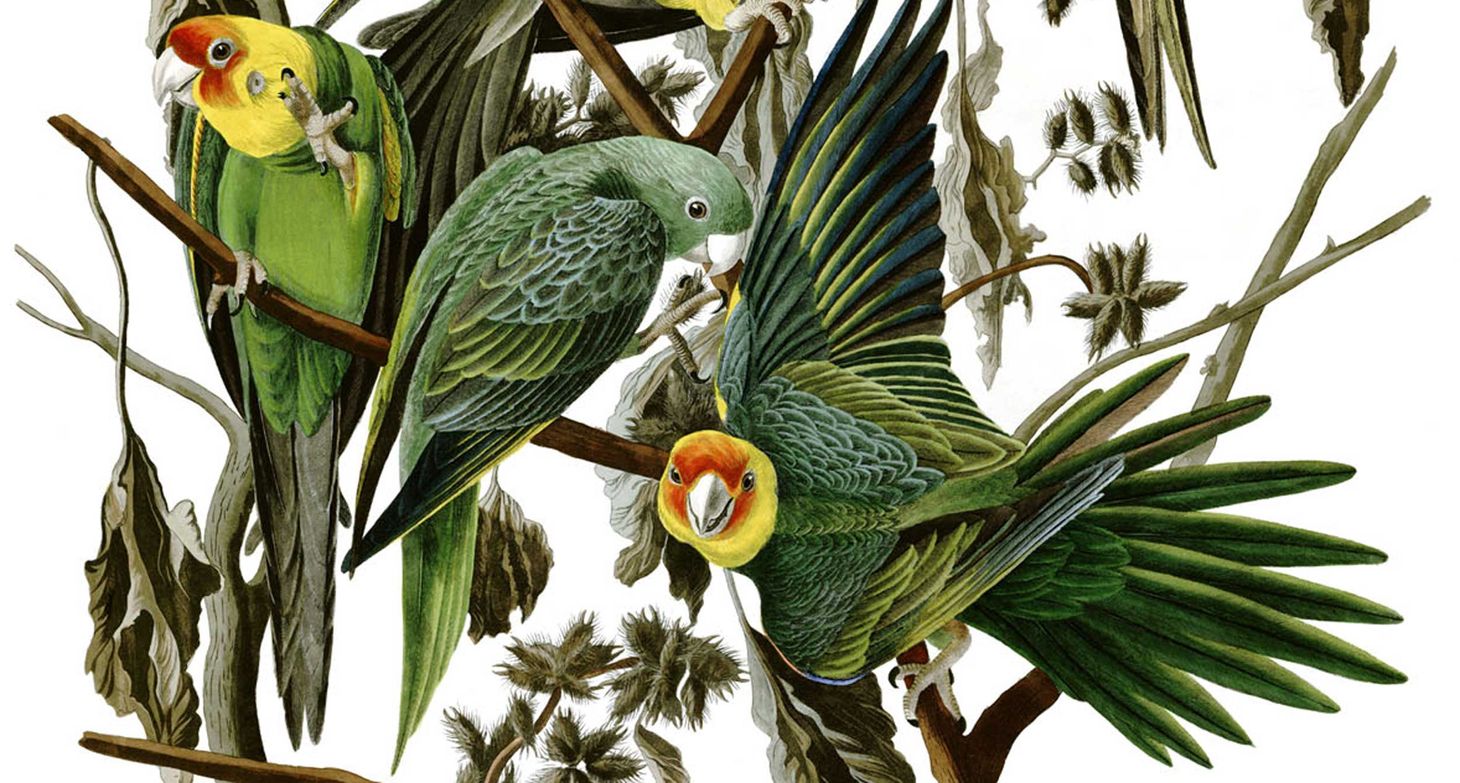Solving the mystery of the Red Deer Cave people
New DNA evidence is revealing the genetic relationships of ancient groups from southern China, showing how they were connected to living people across the region.
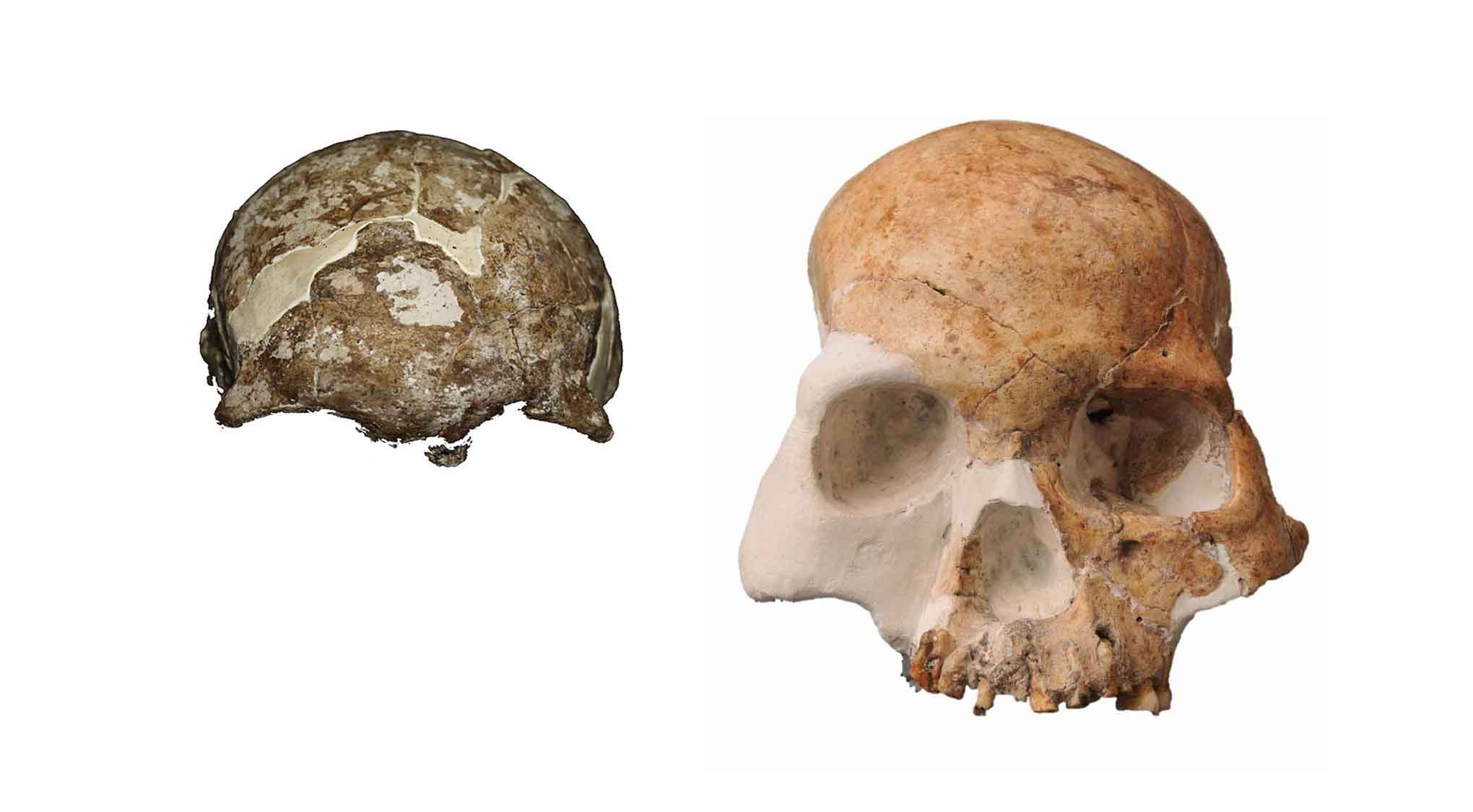
Headlines in 2012 reported the possible discovery of “a new human species”. The bones were from Guangxi and Yunnan Provinces, in southern China, and some came from an individual that lived a mere 11,000 years ago. News stories were illustrated with an artist’s conception of this prehistoric person. A short-cropped beard juts beneath his mustacheless face, trailing down onto hair-covered shoulders and arms.
A 2014 Australian documentary used the label, “Enigma Man”. But the name that caught on was the “Red Deer Cave people”.
During the last two years, DNA evidence cracked the enigma. These ancient people were not another species. Nor were they hybrids of undiscovered human relatives. In fact, the Red Deer Cave people weren't even a single people.
Revisiting an archaeological cold case
The scientific story of the Red Deer Cave people began more than 40 years ago. In 1979, Li Changqing found a fragmented skull and other parts of a human skeleton within Laomaocao cave, in Guangxi Province of southern China. Like many caves in southern China, local people had dug much of the guano-rich sediment out to make fertilizer. The guano mining left a small amount of hardened ancient sediment, within which a few bones were cemented with bits of charcoal.
Li sent a block of this ancient sediment with human bones to the Yunnan Provincial Museum in Kunming, where the anthropologist Zhang Xingyun studied them. Three years later, Zhang and Li published a short description of a fossil jaw and the cave setting where the material was found. The artifacts came from people who lived a few thousand years before rice agriculture began to transform southern China. The human fossil was designated by the county where the cave is located, Longlin.

Later, in 1989, Zhang partnered with archaeologists from the Mengzi Institute of Cultural Relics to excavate a site known as Red Deer Cave, or Maludong, in Yunnan. In the cave’s sediment were lenses of ash from ancient campfires and burned bones of red deer and other animals, meals of the people who used the cave. The team unearthed fragmented human bones from a handful of ancient people, some stone artifacts, and many spades and awls made of deer antler.
Some of the human bones had cutmarks. Holes in one of the fragmented skulls appeared to have been drilled. Zhang and his collaborators published what they had found, and the finds entered other researchers’ lists of prehistoric archaeological sites in China. As in the case of Laomaocao, some of the Maludong skeletal remains were named for the county in which they were found, Mengzi.
By 2008 a new generation of archaeologists were starting to examine these old excavations. Ji Xueping from the Yunnan Institute of Cultural Relics and Archaeology teamed up with Darren Curnoe from the University of New South Wales in Australia to investigate Maludong. Around the same time, members of the team began to study the Longlin skull. They extracted the remaining parts of the skull and other pieces out of the block that still encased them 30 years after discovery. They also worked to refine the geological ages of the two sites. They found that the Longlin 1 individual lived around 11,000 years ago, and the Maludong human remains were between 14,500 and 13,000 years old.
A curious mosaic
As they studied the human bones, Ji, Curnoe, and their team noticed an intriguing mixture of features. The forehead of the Longlin 1 skull is high and rounded, similar to people who can be found in most populations around the world today. But the area of the temporal bone where the jawbone attaches is larger and deeper than most people today, and the cheekbones flare widely outward from the face.
The MLDG 1704 skull from Maludong is different from Longlin 1 in some ways. It has a low forehead with a projecting ridge of bone framing the top of its eyes. Two Maludong molars have long, enlarged pulp cavities. This condition, called taurodontism, is sometimes found in people’s teeth today but is better known for its high incidence in ancient Neanderthals.
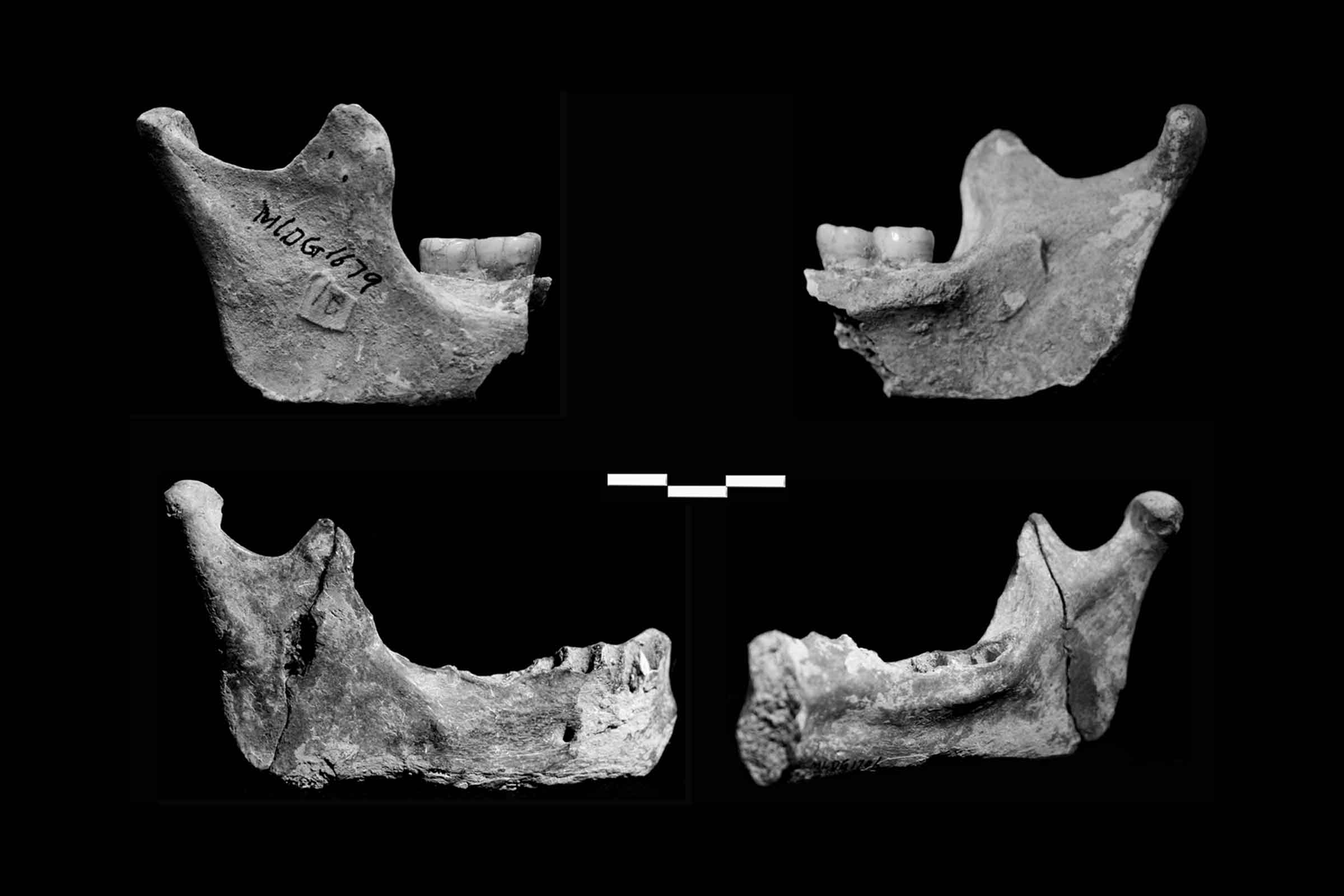
Curnoe, Ji, and their team added up the traits. In their assessment these ancient bones were not a close fit to any of today’s populations. But neither did they fit easily into any ancient population. Measurements of the Longlin 1 skull grouped it together with a motley crew of fossil skulls from Israel, Europe, and northern China — all modern people, and all dating to much earlier times than 11,000 years ago.
“Their anatomy was nothing like we’d seen before in modern humans, whether they lived 200,000 or 200 years ago: they were truly unique and a real mystery to us and many of our colleagues.”—Darren Curnoe
The researchers published their findings in 2012. They concluded that these bones from Longlin and Maludong, representing individuals who lived within a few thousand years and a few hundred miles of each other, represented a different population than archaeologists had previously encountered. They suggested these people were something new.
The team had considered the idea that the bones were simply “robust” individuals from a modern population that had lived in this region before farmers arrived and changed the human landscape of southern China. This hypothesis, they explained, was “unsatisfactory”. Modern humans in the region today mostly come from African ancestors who entered Asia after 70,000 years ago. By 2012 it had become clear that today's peoples of China have a small fraction of Neanderthal ancestry, also—averaging around 2% in East Asian people today. But the skeletal traits of the Maludong and Longlin samples didn't seem to be easily explained by a tiny fraction of genetic ancestry from distant groups. The Red Deer Cave people, the team suggested, might have an even higher fraction of such “archaic” mixture.
One possibility was that the source population had been an earlier layer of modern humans, who arrived in eastern Asia long before 50,000 years ago. Maludong and Longlin themselves date to the last part of the Pleistocene and early Holocene, less than 15,000 years ago. But within southern China and nearby southeast Asia there are much earlier sites, before 70,000 years ago, with skeletal remains that resemble “modern” humans. The earliest is Zhirendong, where archaeologists found a mandible with features resembling modern humans from more than 100,000 years ago. Maybe there was an earlier migration from Africa, long before 50,000 years ago. If so, this group might have looked noticeably different from today's populations, possibly explaining some features of the Longlin and Maludong fossils.
The story of the Red Deer Cave people generated worldwide fascination. Many people were entranced by the idea of a mystery population surviving almost until historic times. Some compared the Maludong and Longlin scenario to the case of Homo floresiensis, an extinct human relative from the island of Flores. At the time, archaeologists thought that H. floresiensis bones dated to as recently as 18,000 years ago, leading to widespread speculation that today’s groups might have kept alive oral histories of the so-called “hobbits”. (Later work showed that the Flores bones are at least 65,000 years old.)
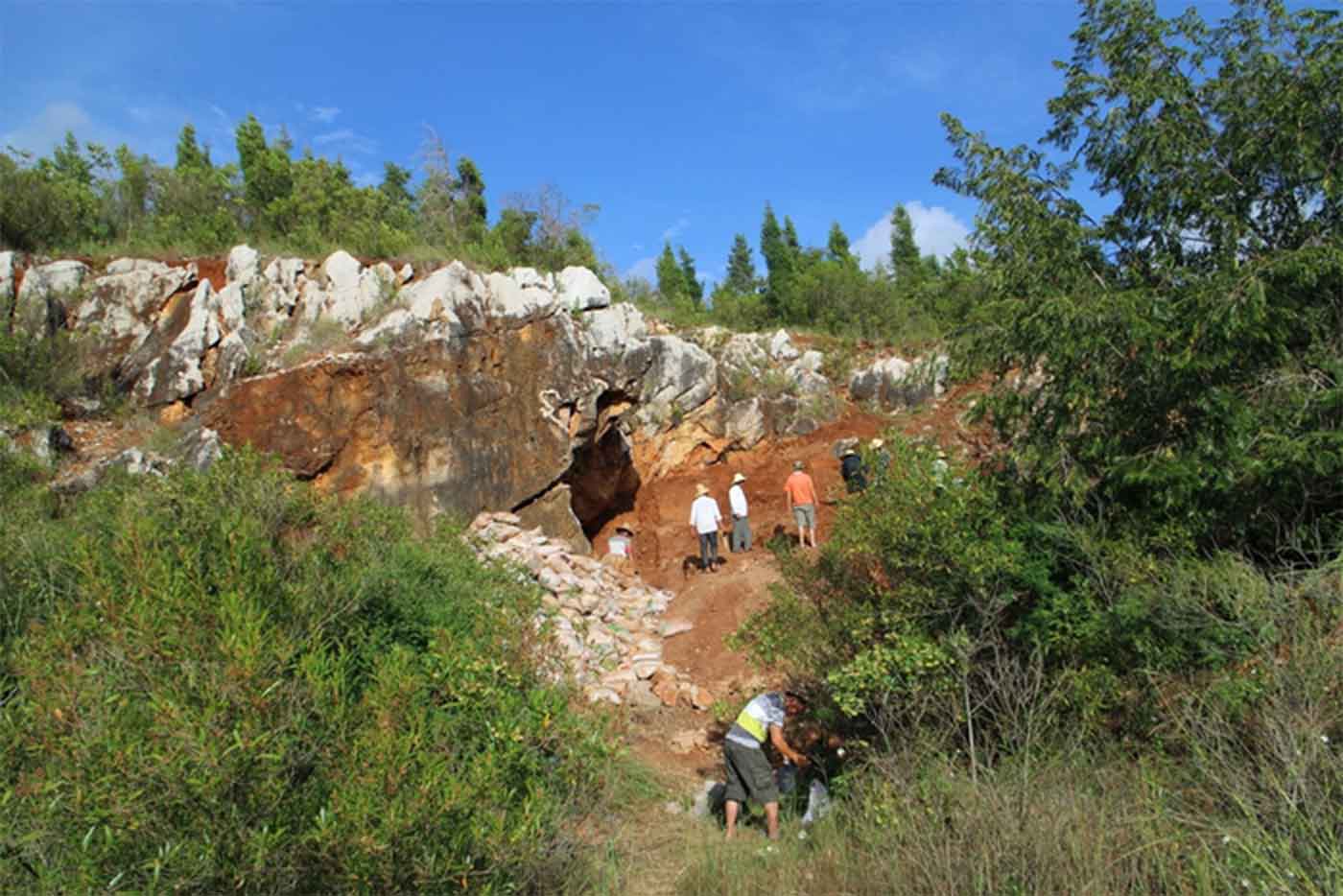
Speculation intensified in 2015, when Curnoe, Ji, and their team described a fragment of thighbone from Maludong that they considered as beyond archaic — in their account, the bone was most similar to the leg bones of Australopithecus, more than two million years old. Could there have been a lost group in southern China, so starkly divergent from any recent humans in the region?
Newspapers proclaimed the bones “a new species.” One press outlet suggested, “The Red Deer Cave people look a lot like the Star Wars Wookiee”
Among anthropologists, opinions were divided. Some expressed skepticism of the idea that the Maludong and Longlin bones came from an “archaic” group. One called the idea “an unfortunate overinterpretation and misinterpretation of robust early modern humans”. Some were more receptive. The anthropologist Jeffrey Schwartz accepted the bones as something distinct from our species. But he disagreed with the interpretation of the fossils, suggesting that the Longlin remains came not from one individual but a mixture of four.
Still others suggested that the Red Deer Cave people might actually have been the last Denisovans. This group, known at the time only from DNA evidence from a southern Siberian cave, left slight genetic traces in nearly all of today’s populations of east and southeast Asia. It seemed possible to imagine that some Denisovans might have persisted long after this pulse of ancient mixture, living alongside modern people.
DNA enters the picture
In 2021, a team of paleogeneticists led by Tianyi Wang and Qiaomei Fu, from the Institute of Vertebrate Paleontology and Paleoanthropology (IVPP) in Beijing, reported on the genome of the Longlin 1 individual. They generated new DNA data from more than a dozen early Holocene archaeological sites in both Guangxi and nearby Fujian. At the time, this work was the largest comparison of historic and prehistoric genomes from southern China.
The Longlin skull, its DNA revealed, was not a relic of an “archaic” human population. This individual's genome has the same amount of Denisovan and Neanderthal ancestry as living people in the same region. There is no evidence of deep genetic ancestry from any unknown groups.
“Our analysis suggests that Longlin does not show high archaic-related ancestry.” — Tianyi Wang and coworkers
Then last year, Xiaoming Zhang and coworkers from the Kunming Institute of Zoology retrieved ancient DNA from the most well-preserved of the Maludong human bones, the MLDG 1704 skull. Those results echoed the DNA results from Longlin. The Longlin 1 and MLDG 1704 genomes are closest to people today from the surrounding parts of Asia, but not especially close to any current group.
The genomes of these two individuals also don't seem especially close to each other. The 14,000-year-old MLDG 1704 and 11,000-year-old Longlin individuals were not members of a single ancient group, but were two among a wide spectrum of ancient peoples who lived across southern China and southeast Asia.
Later genomes from the early and mid Holocene help to show what happened across the region. Wang and coworkers were able to sequence DNA from several other sites. These include a 11,500-year-old individual from Qihe, in Fujian province on China's southeast coast, and Dushan Cave and Baojianshan, both in the range around 8000 years ago from Guangxi. Earlier work by Hugh McColl and coworkers had focused on southeast Asia, including an individual associated with the ancient Hòabìnhian culture from Pha Faen, Laos, also around 8000 years old. These individuals were genetically diverse.
All these individuals belonged to mobile forager groups before the adoption of agriculture across much of this region. Today, the largest ethnic groups in the region, such as the Han, Miao, Yi, and Dai, have traditional languages and cultures from early farmers who moved into this region from other parts of China and southeast Asia, starting around 5000 years ago. As they moved into the hills and forests, these early farmers made a patchwork of peoples, languages and ways of life.
Before those early farmers got started, a wide array of foraging peoples lived across this region. In much of mainland southeast Asia between 11,000 and 4,000 years ago many of these peoples used stone tools that archaeologists have grouped by the name Hòabìnhian, first identified in the 1920s by Madeleine Colani based on excavations from Hòa Bình province of northern Vietnam. Stone tool assemblages from these sites have many small flake tools made from rounded cobbles, as well as the distinctive cobbles with flakes removed around the circumference of one side. The people were hunters who mostly pursued small and medium-sized mammals, and their sites often have many remains of fish and shellfish.
Sites from southern China also have archaeological cobble tool assemblages, but as shown by Li Yingua and colleagues, the people of this region made them in slightly different ways than further southwest. The ancient inhabitants of Yunnan and Guangxi lived in similar environments and mostly ate the same animals, fish, and shellfish as foragers further to the south.
Although these people shared much in their way of life, their genetic histories were different. The early Holocene individuals from Qihe, Longlin, and Pha Faen had genealogies that stretched more than 30,000 years into the past. The Maludong individual sequenced by Zhang and coworkers also came from deep roots. During the times that these individuals all lived, the hills and forests across this region must have been full of different languages and cultures, all eating similar foods and exchanging knowledge about toolmaking.
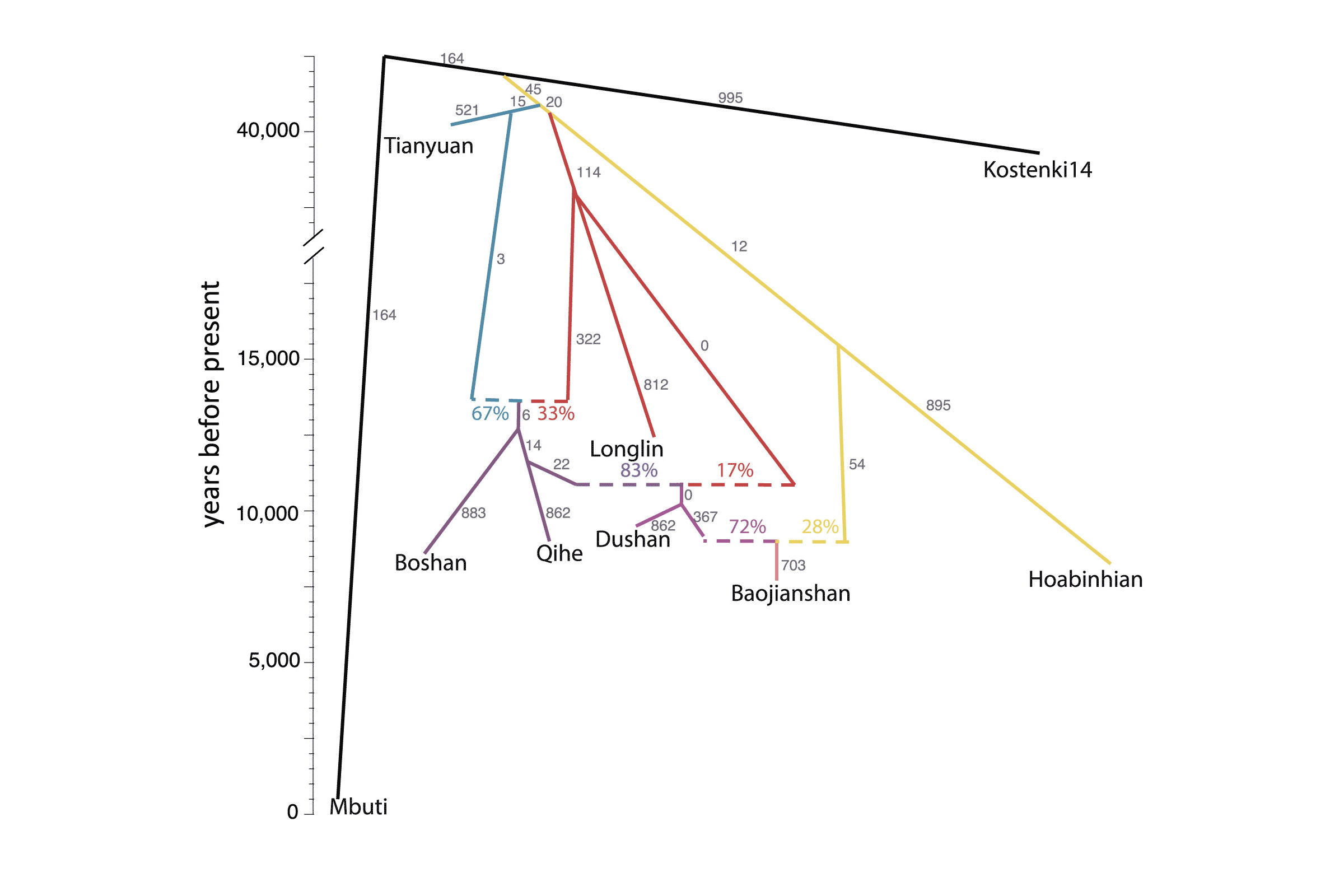
Still, there were links across these populations. The mitochondrial DNA of the Longlin 1 individual, seqeunced by Fan Bai and Xinglong Zhang from Fu’s IVPP lab in 2020, belongs to a branch known as M71, which can also be found in living people in Thailand, Laos, and Myanmar. The common ancestor of this mitochondrial branch lived around 22,000 years ago. Sharing this young mtDNA branch tells us that the genealogy of the 11,000-year-old Longlin individual was intertwined with a network of genetic exchanges that spanned the region during the Late Pleistocene.
Likewise, some later Holocene genomes had genetic ancestors that were distant relatives of the Longlin individual. Wang and colleagues examined the genome of a 8800-year-old individual from Dushan Cave. Some 83% of the genetic ancestry of this individual, Dushan 4_1, is shared with Longlin 1, while the remainder comes from populations further east, similar to the early Holocene individual from Qihe. Another site, Baojianshan, has an individual who was genetically most like the Dushan 4_1 individual but also had genetic ancestry from someone like the Hòabìnhian-associated individual from Pha Faen.
Those Holocene genomes document the first stages of the group mixtures that would dominate the last 5000 years. First pottery and then other innovations were introduced across the region. Groups from southeastern China grew and their descendants spread farming practices. As a result, today's people across both southern China and southeast Asia share much of their genetic variation with early Holocene people from the southeast China coastal region. Mixture with peoples from northern China also became more important over time. Still, the genetic legacy of the Guangxi early Holocene foragers remains a part of today's peoples. Ancient groups represented by the genomes from Longlin, Maludong, and Pha Faen were among the genetic ancestors of today's populations, just at a lower fraction than the early farmers.
“These patterns indicate that the genetic diversity in Asia 11,000 years ago was higher than in more recent periods of human history.” — Tianyi Wang and coworkers
An evolutionary pathway
The idea of the Red Deer Cave people got started three decades after the discoveries of the skeletal remains. New researchers looked at the material with fresh eyes, which brought a growing knowledge of the importance of ancient mixture in the formation of modern human populations. It was natural to hypothesize that ancient mixture of some kind might explain their anatomical variation. Now, after another decade, ancient DNA directly from two of the individuals shows that they weren't products of ancient hybridization or persistence groups from before 70,000 years ago.
In one sense, the ancient Longlin and Maludong individuals do represent “lost” populations. Human groups rapidly diversified across eastern and southeast Asia after 70,000 years ago. They entered ecologies that were new to them, encountered new animals and plants, and over time they all invented new ways of life. They lived in the hills and forests, and when sea levels were lower they lived across a broad coastal plain, much of which is now underwater. The population across this region may have been at a high point of diversity at the Last Glacial Maximum around 18,000 years ago.
By the end of the Pleistocene, rising sea levels brought ancient groups together where they exchanged information and began to mix. The Laomaocao and Maludong sites represent this time period. The upland hills and river valleys of Yunnan, Guangxi, Vietnam, Laos, and Thailand absorbed people from the shrinking coastal plain who had varied languages and genetics. Over thousands of years their populations interacted and mixed. Ultimately, even more peoples brought agricultural lifeways to the region. Individuals had more and more genetic similarity, even as more ancient groups became part of the growing population's genetic heritage. Their skeletal diversity decreased.
This was the pathway by which many populations evolved during the time from 18,000 to 5000 years ago. Diverse groups encountered each other under new geographic and climatic circumstances and found ways to interact and mix. Most groups had to shift their ancient ways of life, and those shifts favored some more than others. Anthropologists already know of many more skeletal remains from this time period that have unique or distinctive anatomical patterns. Most will be part of stories like this one: people who lived at high points of human cultural and genetic diversification, just before the appearance of agriculture-bearing peoples.
Notes: Maludong is sometimes transliterated as Malu Dong, the word “dong” being the word for “cave”. Some authors, including Zhang and coworkers, designate the MLDG 1704 cranium as Mengzi Ren, following the pattern of Longlin 1. I've retained the “Maludong” designation here because skeletal remains from several other individuals were relevant to the earlier work on the anatomy of the collection.
I have relied on several sources that describe the context of the discovery of the Longlin and Maludong material, including Human Fossils in China by Wu Liu et al. (2017), Human Evolution in China by Xinzhi Wu and Frank Poirier (1995), research papers on both sites, and popular articles in The Conversation by Curnoe and collaborators.
The broad picture of later Holocene evolution in southern China and southeast Asia is a topic with growing genetic evidence. The papers by Wang and coworkers and McColl and coworkers are together a good introduction to this area.
Last year Pianpian Wei and coworkers did a reanalysis of the femur fragment from Maludong, focusing on whether it really represents a surprising degree of similarity to archaic or earlier hominins. They found that most of its anatomy was consistent with other short-statured but robust human femora from the Late Pleistocene. The emphasis of this study is different from the earlier research by Curnoe and coworkers, and I don't think they set out to address the same questions. Each study adds different comparative data to their understanding of variation.
References
Chi, Z., & Hung, H. (2012). Later hunter-gatherers in southern China, 18 000–3000 BC. Antiquity, 86(331), 11–29. https://doi.org/10.1017/S0003598X00062438
Curnoe, D., Xueping, J., Herries, A. I. R., Kanning, B., Taçon, P. S. C., Zhende, B., Fink, D., Yunsheng, Z., Hellstrom, J., Yun, L., Cassis, G., Bing, S., Wroe, S., Shi, H., Parr, W. C. H., Shengmin, H., & Rogers, N. (2012). Human Remains from the Pleistocene-Holocene Transition of Southwest China Suggest a Complex Evolutionary History for East Asians. PLOS ONE, 7(3), e31918. https://doi.org/10.1371/journal.pone.0031918
Curnoe, D. (2012). Defining “human” – new fossils provide more questions than answers. The Conversation. http://theconversation.com/defining-human-new-fossils-provide-more-questions-than-answers-5847
Curnoe, D. (2015). Bone suggests ‘Red Deer Cave people’ a mysterious species of human. The Conversation. Retrieved January 22, 2023, from http://theconversation.com/bone-suggests-red-deer-cave-people-a-mysterious-species-of-human-52437
Curnoe, D., Ji, X., Liu, W., Bao, Z., Taçon, P. S. C., & Ren, L. (2015). A Hominin Femur with Archaic Affinities from the Late Pleistocene of Southwest China. PLOS ONE, 10(12), e0143332. https://doi.org/10.1371/journal.pone.0143332
Liao, W., Xing, S., Li, D., Martinón-Torres, M., Wu, X., Soligo, C., Bermúdez de Castro, J. M., Wang, W., & Liu, W. (2019). Mosaic dental morphology in a terminal Pleistocene hominin from Dushan Cave in southern China. Scientific Reports, 9(1), Article 1. https://doi.org/10.1038/s41598-019-38818-x
Matsumura, H., Hung, H., Higham, C., Zhang, C., Yamagata, M., Nguyen, L. C., Li, Z., Fan, X., Simanjuntak, T., Oktaviana, A. A., He, J., Chen, C., Pan, C., He, G., Sun, G., Huang, W., Li, X., Wei, X., Domett, K., … Reinecke, A. (2019). Craniometrics Reveal “Two Layers” of Prehistoric Human Dispersal in Eastern Eurasia. Scientific Reports, 9(1), Article 1. https://doi.org/10.1038/s41598-018-35426-z
McColl, H., Racimo, F., Vinner, L., Demeter, F., Gakuhari, T., Moreno-Mayar, J. V., van Driem, G., Gram Wilken, U., Seguin-Orlando, A., de la Fuente Castro, C., Wasef, S., Shoocongdej, R., Souksavatdy, V., Sayavongkhamdy, T., Saidin, M. M., Allentoft, M. E., Sato, T., Malaspinas, A.-S., Aghakhanian, F. A., … Willerslev, E. (2018). The prehistoric peopling of Southeast Asia. Science, 361(6397), 88–92. https://doi.org/10.1126/science.aat3628
Sun, X., Wen, S., Lu, C., Zhou, B., Curnoe, D., Lu, H., Li, H., Wang, W., Cheng, H., Yi, S., Jia, X., Du, P., Xu, X., Lu, Y., Lu, Y., Zheng, H., Zhang, H., Sun, C., Wei, L., … Li, H. (2021). Ancient DNA and multimethod dating confirm the late arrival of anatomically modern humans in southern China. Proceedings of the National Academy of Sciences, 118(8), e2019158118. https://doi.org/10.1073/pnas.2019158118
Wang, T., Wang, W., Xie, G., Li, Z., Fan, X., Yang, Q., Wu, X., Cao, P., Liu, Y., Yang, R., Liu, F., Dai, Q., Feng, X., Wu, X., Qin, L., Li, F., Ping, W., Zhang, L., Zhang, M., … Fu, Q. (2021). Human population history at the crossroads of East and Southeast Asia since 11,000 years ago. Cell, 184(14), 3829-3841.e21. https://doi.org/10.1016/j.cell.2021.05.018
Wei, P., Ma, S., Carlson, K. J., Ji, X., Zhang, Q., Liu, W., & Jin, L. (2022). A structural reassessment of the Late Pleistocene femur from Maludong, southwestern China. American Journal of Biological Anthropology, 178(4), 655–666. https://doi.org/10.1002/ajpa.24569
Yinghua, L., Dung, L. T. M., So’n, Đ. H., Fajun, L., Forestier, H., Yuduan, Z., Peng, C., Liwei, W., Chengpo, H., & Tingting, L. (2021). A New Technological Analysis of Hoabinhian Stone Artifacts from Vietnam and its Implications for Cultural Homogeneity and Variability between Mainland Southeast Asia and South China. Asian Perspectives, 60(1), 71–96. https://doi.org/10.1353/asi.2020.0037
Zhang, Y., Lu, H., Zhang, X., Zhu, M., He, K., Yuan, H., & Xing, S. (2021). An early Holocene human skull from Zhaoguo cave, Southwestern China. American Journal of Physical Anthropology, 175(3), 599–610. https://doi.org/10.1002/ajpa.24294
Zhang, X., Ji, X., Li, C., Yang, T., Huang, J., Zhao, Y., Wu, Y., Ma, S., Pang, Y., Huang, Y., He, Y., & Su, B. (2022). A Late Pleistocene human genome from Southwest China. Current Biology, 32(14), 3095-3109.e5. https://doi.org/10.1016/j.cub.2022.06.016
John Hawks Newsletter
Join the newsletter to receive the latest updates in your inbox.



